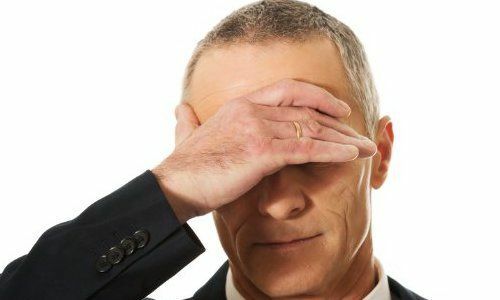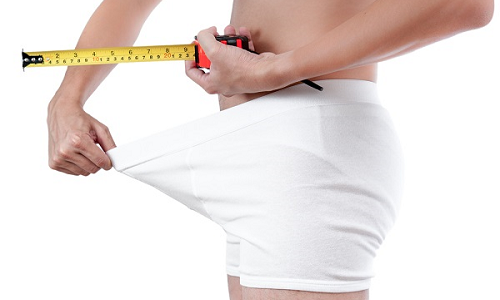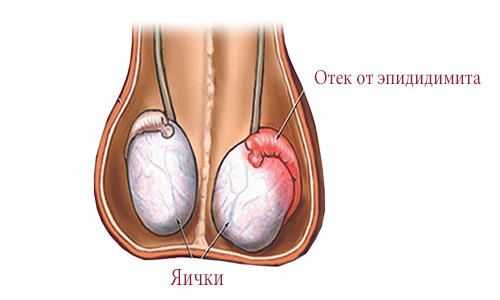An enlarged prostate is often found on medical examination in men. The change in size occurs due to the development of the inflammatory process. The process leads to the appearance of prostatitis. Prostatitis has a different character and causes a variety of symptoms. The causes of prostatitis can be determined only by medical examination. It is impossible to diagnose independently.
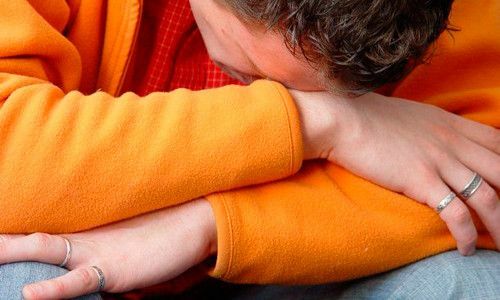
Characteristics of the disease
Prostatitis develops in the prostate gland. The organ consists of several lobules. Outwardly it resembles a walnut. The normal size is considered to be a diameter of up to 5 cm. If the size is larger than this figure, then the appearance of prostatitis. Symptomatic disease depends on the location of the prostate. It is located on the upper part of the urinary tract. The bladder lies on top of the prostate.
The secret of semen is produced in the prostate gland. Also, it produces a male hormone, responsible for the formation of sexual characteristics and sexual activity. The development of these substances begins in boys during adolescence. Up to this time the prostate gland has been growing gradually. At the onset of sexual activity, the prostate glands dramatically. With the full development of functions, the organ retains its dimensions.
Under the influence of various causes, an inflammatory process occurs. The organ changes its size. When examined, the enlarged prostate gland is diagnosed. The pathological process can have two mechanisms of development:
- Infectious;
- Other ways of appearance.
Infectious prostatitis is more common in modern men. It is bacterial in nature. When pathogenic microorganisms get into the urinary tract, an increase in the colony of microbes occurs. Bacteria feed on the beneficial microflora of the urinary system. There is a death of useful microorganisms. Pathogenic bacteria pass into the upper part of the pathways and move to the prostate gland. In the body, microbes develop and actively multiply. Microorganisms eat cells of the prostate tissue. At the site of their localization, dead tissues and waste products accumulate. These substances cause inflammation of the internal wall of the prostate.
 Diagnosis of bacterial prostatitis is not difficult for specialists. In the smear, colonies of pathogenic microbes are rapidly sown. Treatment is appointed after a precise diagnosis.
Diagnosis of bacterial prostatitis is not difficult for specialists. In the smear, colonies of pathogenic microbes are rapidly sown. Treatment is appointed after a precise diagnosis.
The non-infectious form of prostatitis causes difficulties. With this form of the disease is difficult to identify the cause of inflammation. To properly assign treatment, the patient must undergo a complex and volumetric examination.
Also, prostatitis is divided into the etiology of the flow. A chronic type of inflammation of the prostate gland and its acute form are distinguished. Both forms have similar symptoms. The difference is the time of manifestation of pathological signs of the disease.
Causes of bacterial prostatitis
The cause of bacterial prostatitis is a bacterium. Often, when examining a smear, staphylococcus or streptococcus is detected. This kind of microorganisms does not have complex ways of development. The bacterium is anaerobic and does not die without the presence of oxygen. The microorganism well tolerates the temperature drop in the body. The death of staphylococcus occurs only at 70 degrees.
In rare cases, the prostate increases when affected by other types of bacteria, most of which cause venereal infections. Eliminates this form of pathology with the help of various medications.
Causes of non-infectious prostatitis
This pathology also diagnoses an enlarged prostate gland. Prostate changes its size due to such pathological factors as:
-
 Changing the hormonal background;
Changing the hormonal background; - Sharp temperature drop;
- Damage to the organ;
- Concomitant pathologies in the body;
- Incorrect way of life;
- Professional features of men.
A change in the hormonal background affects the amount of testosterone in the prostate. The substance ceases to influence the secretion of seminal fluid by the body. The prostate begins to increase. There is a gradual development of noninfectious prostatitis. Pathology is easily eliminated with the help of hormonal drugs.
Also the cause of the appearance of the disease is considered to be a sharp temperature drop. Visiting the sauna means cooling the body in the pool after a hot steam room. This causes a sharp change in temperature in the body. The prostate gland is a sensitive organ. Frequent changes in temperature lead to an inflammatory process in the prostate.
The disease also develops when the prostate tissue is damaged. With a strong impact or bruise, squeezing of the prostate tissue occurs. Deformation involves partial death of the cells of the organ. It is accompanied by a prostatitis. Doctors recommend a traumatology in case of a bruise of the sacral department. Timely treatment will quickly eliminate the pathological process.
Affects the patient's wrong lifestyle. Many men abuse alcohol and prefer fatty and fried foods. These habits attract pathological changes in the organs. This is due to the disruption of the hormonal system and lipid metabolism. Hormones cease to affect the function of the prostate. The lipid system causes the accumulation of excess body fat. Weight gain and hormonal failure adversely affect the condition of the prostate gland. Similar processes also occur with a sedentary lifestyle. If a patient has low physical activity, the functions of the same systems are disrupted.
Small mobility also depends on the profession of a man. With prolonged exposure to one place in the body, metabolic processes are slowed down. There is a violation of the supply of oxygen. Cells stop actively multiplying. There is an accumulation of dead tissue.
Symptoms of the disease
Symptoms of an enlarged prostate are similar in both forms of lesion. A man has some complaints.
The main complaint is a urinary tract disorder. The enlarged organ exerts pressure on the lower part of the bladder.
 A pocket is formed on this site. It accumulates liquid, which is not withdrawn from the pocket. The accumulated urine causes the man to visit the toilet frequently. After the visit, there is a feeling of incomplete emptying. This forces a man to constantly run to the toilet.
A pocket is formed on this site. It accumulates liquid, which is not withdrawn from the pocket. The accumulated urine causes the man to visit the toilet frequently. After the visit, there is a feeling of incomplete emptying. This forces a man to constantly run to the toilet.
This phenomenon is also amplified at night. Stagnant fluid leaves the pocket in a lying position. The patient gets up and she moves back into her pocket. The process occurs constantly when in a lying posture. This entails interrupting a person's sleep. There is irritability, lethargy, drowsiness. Violated psycho-emotional background.
Severe form of prostatitis leads to a strong increase in the prostate. It completely blocks the urethra. Urination stops or becomes drip. The liquid is released spontaneously. There is incontinence or blockage. This phenomenon requires immediate medical intervention.
Prostatitis can be accompanied by painful sensations in the lower part of the peritoneum or in the emptying of the intestine. Pain also occurs when urine is excreted. Only pain relieves spasmolytics.
Diagnosis of the disease
With an enlarged prostate it is necessary to undergo a medical examination. Various methods are used for the study. The device is examined by ultrasound. On the screen, the specialist notes the increased boundaries of the organ and reveals the affected tissue site. In some cases, magnetic resonance imaging is performed. This type of examination is appointed with the purpose of excluding oncological diseases.
It is also necessary to take a smear from the patient's urethra. The procedure is painful, but necessary. A smear allows you to study the content of the microflora of the urethral canal. When placed in a special capacity, specialists form a favorable environment for the development of microorganisms. The sprouting colony of bacteria helps to establish the nature of prostatitis and the cause of the enlarged prostate.
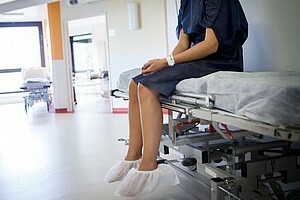 The patient also takes urine and blood sampling. If a patient has stagnant phenomena, a special catheter should be inserted. It will help to release the bubble from the accumulated liquid. The liquid is tested for the presence of salts. In many cases, prolonged chronic prostatitis is accompanied by urolithiasis. If the salts in the urine exceed the norm, an additional kidney examination is prescribed.
The patient also takes urine and blood sampling. If a patient has stagnant phenomena, a special catheter should be inserted. It will help to release the bubble from the accumulated liquid. The liquid is tested for the presence of salts. In many cases, prolonged chronic prostatitis is accompanied by urolithiasis. If the salts in the urine exceed the norm, an additional kidney examination is prescribed.
Treatment methods
An enlarged prostate gland requires immediate treatment. Various methods are used for therapy. The main therapeutic effect is in such ways as:
- Drug therapy;
- Manual Exposure;
- Magnetic heat.
Drug therapy is performed by a combination of medications. To eliminate edema from the prostate, it is necessary to use antibiotic drugs and anti-inflammatory drugs. Antibiotics are selected depending on the sensitivity of bacteria. If bacteria are not detected, preparations of a wide spectrum of action are prescribed. They are effective against a large group of pathogens.
Anti-inflammatory drugs help to significantly reduce edema. With the removal of puffiness from the urinary tract, the outflow of fluid from the bladder increases. Also prescribed drugs that enhance the excretion of urine. These substances have a strong antispasmodic effect. There is a rapid cleansing of the bladder from the stagnant liquid.
 Magnetic heat is also used for therapy. Special magnetic plates are placed on the patient's waist. This helps the heat waves to act faster on the enlarged organ. Under the influence of heat, there is an increase in metabolic processes in the prostate gland. Inflammation goes faster. It should be borne in mind that this type of medical treatment is prescribed only after the complete elimination of the exacerbation of the disease.
Magnetic heat is also used for therapy. Special magnetic plates are placed on the patient's waist. This helps the heat waves to act faster on the enlarged organ. Under the influence of heat, there is an increase in metabolic processes in the prostate gland. Inflammation goes faster. It should be borne in mind that this type of medical treatment is prescribed only after the complete elimination of the exacerbation of the disease.
Electrostimulation of the prostate also has a similar effect. Heat is then released by an electric current. But this type of treatment helps to quickly reduce the volume of the prostate. Under the influence of electric heat inflamed tissues melt. The walls of the prostate take a normal shape.
Modern doctors recommend to use and services of the masseur. Massage of the prostate gland enhances blood circulation in the small pelvis.
Blood begins to deliver more oxygen to the tissues. The cells actively multiply. Damaged areas are more quickly restored. Massage is recommended to combine with acupuncture. Needles are installed on the waist area and enhance the positive effects of the massage. Both types of manual intervention should be carried out by a qualified specialist.
During treatment, the patient is recommended to abandon various bad habits. Especially it is necessary to pay attention to your nutrition. In food, animal fats should not be present. The way of preparation excludes frying of products. You can also increase the use of products containing natural androgens. These substances replace the lack of testosterone and contribute to the restoration of the hormonal background. It is necessary to completely eliminate the intake of alcohol-containing beverages. They have a disastrous effect on prostate function and spermatogenesis. If these rules are not followed, then the therapy will not give the proper effect. Treatment in this case will be prolonged for a long time.
Proper treatment of an enlarged prostate allows you to quickly eliminate the pathological process. Also, timely treatment excludes the development of various complications, one of which is infertility and impotence.

